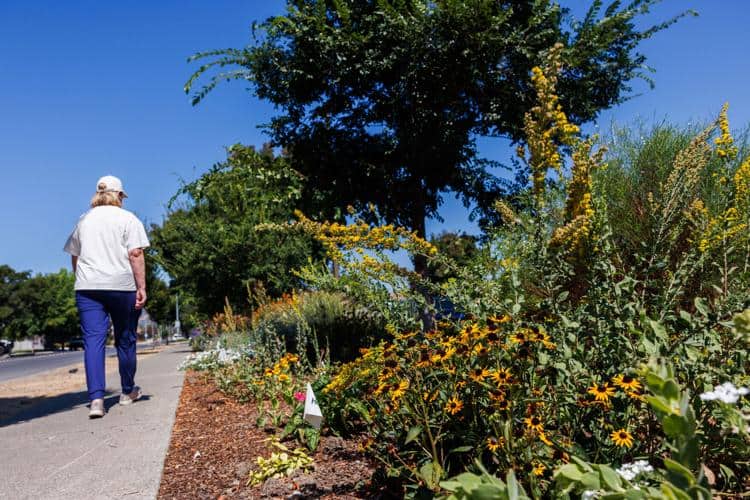Photo: A pedestrian walks past the Learning Garden at Las Flores Community Center in Napa on Tuesday. Nick Otto, Register
Over the weekend, the UC Master Gardeners hosted a workshop at Napa’s Las Flores Learning Garden, which opened last summer, focusing on creating drought-resistant gardens suited to survive the seasons — and fluctuating water levels — in California.
The state’s most recent drought seems to be over, with snow still visible on the Sierra Nevada in mid-August and an unusually wet winter and cool summer delaying the Napa Valley wine grape harvest. Meanwhile, Napans are still using less water than in previous years, according to Josh Stokes, a water conservation specialist for the city of Napa.
Stokes said that July water use is often used as a barometer for looking at trends over time, since it is known for being the highest water-use month of the year. This year, he said that Napa saw a 16% reduction of water use from the same month in 2020, the third-lowest usage in the last three decades.
While this could be in part due to a cooler summer, Stokes said large numbers of Napans are moving away from watering ornamental lawns, and it’s making a big difference.
He explained that having a lawn on the West Coast isn’t sustainable like it is in the East or the Midwest, even during non-drought years.
“Here in the West, we have six months of a dry climate,” Stokes explained. “When you have a dry climate, you’re not getting rain, so what do you have to do? You have to store these big bodies of water for people to dump on their lawns. It’s just not a sustainable way of life.”
Both Stokes and David Layland, a Master Gardener and past board president of the Napa Farmers Market, said that many locals have been replacing their lawns with native and low-water landscaping in recent years. In particular, according to Stokes, the city has seen an acceleration of lawn removals during […]
Full article: napavalleyregister.com

